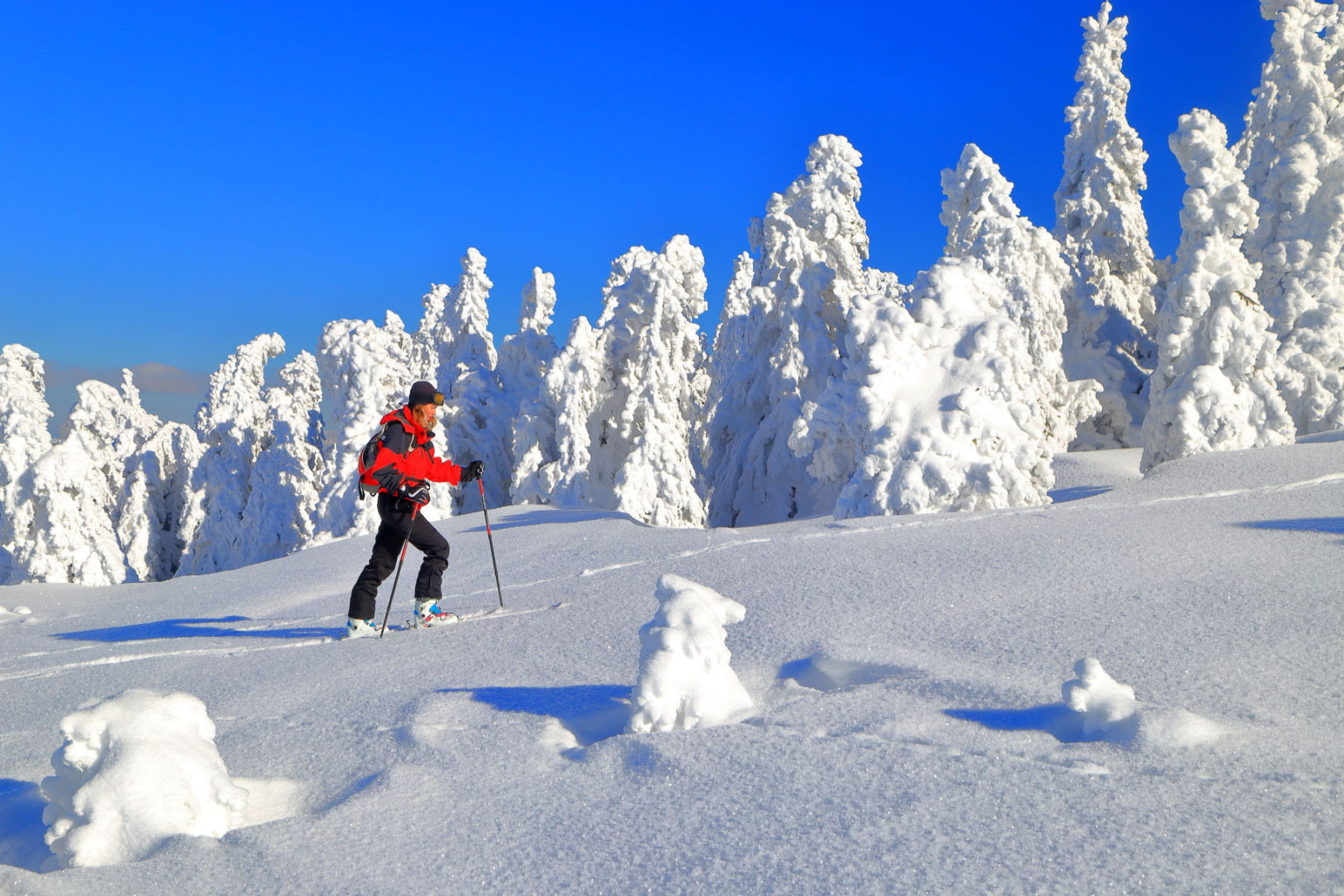Have you just came back from your first ski tour ever and you already know that this is your cup of tea? It's time to consider getting your own gear. There are many different types of skis (as well as friends who'll try to persuade you to choose a specific type for many different reasons). It's easy to get dizzy from all the options. In this article, you'll find all the useful tips on how to put together a ski touring gear that'll fit you perfectly.
10 useful tips on how to buy your first ski touring gear
Ski touring gear complement each other
Don't think of skis, ski boots, bindings and skins as four different pieces of equipment, but as one system designed to co-operate with one another. Different bindings work better together with different ski boots, and different skins fit different skis better.
Probably the best option to start with, is to get your hands on a set that combines skis with proper bindings and skins. If you're picking equipment on your own, always pick exact skins recommended by manufacturer for specific skis.Read more on skins in our article on this topic..
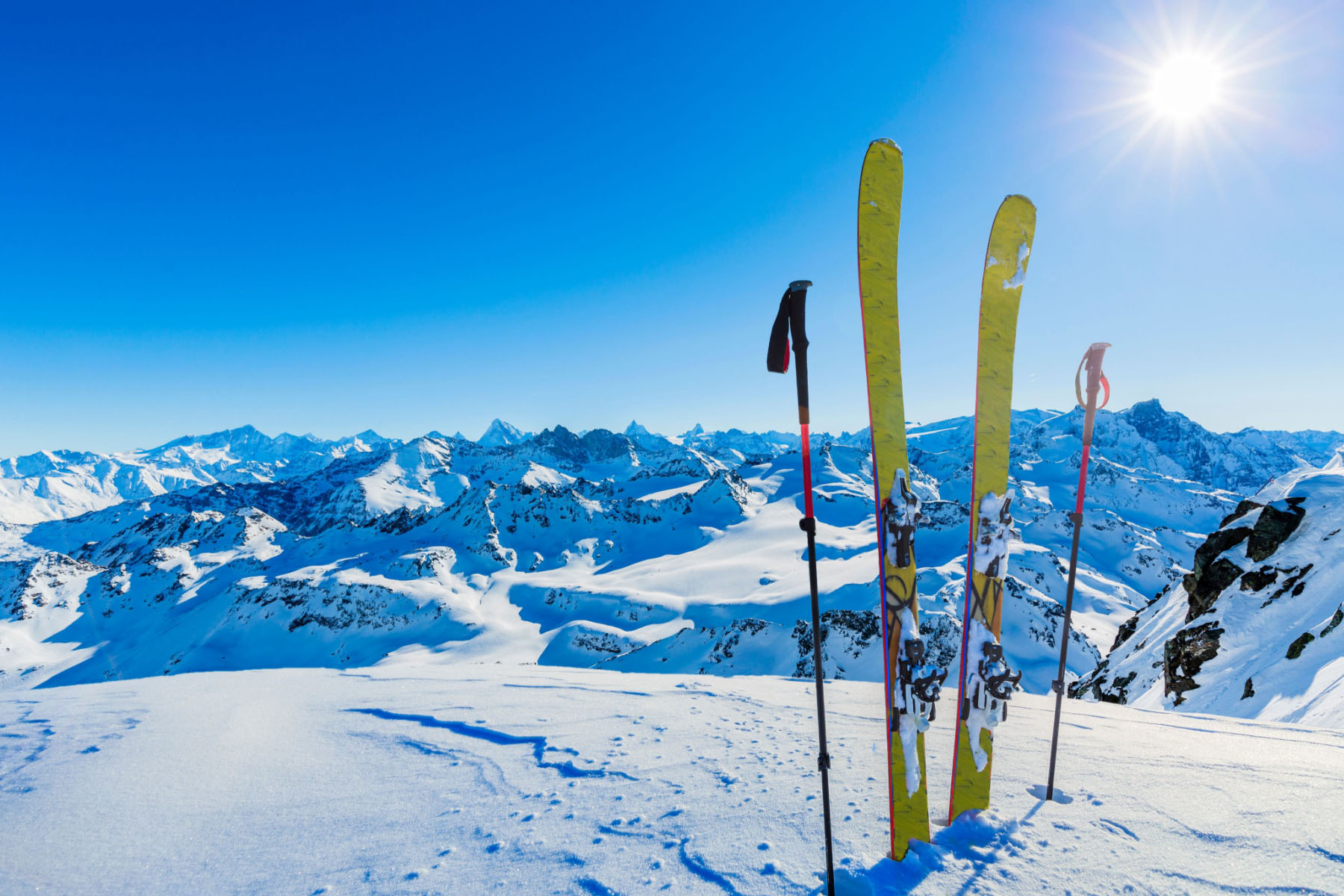
Choose medium-weight skis
Even if weight is not everything, it still shouldn't be underestimated. Most of the rental skis are made of heavy materials, like fibreglass or poplar wood.
They're great for downhill skiing, but they'll be a burden while ascending. On the other hand, light skis are great for an ascent, but skiing down the mountain will be wobbly and without proper balance.Also, a lighter ski is less durable.
It's best to opt for skis made of combination of materials, like fibreglass, carbon or lighter wood as paulownia or fir. Ideal weight of the pair of skis is around 2,5 to 3,5 kg, but it can slightly vary, reflecting your height and weight.
Attention:Some manufacturers indicate weight of a single ski, others for both skis together, so always double-check the parameter.
MUZIKER TIP:
Black Crows Navis Freebird feature a core made of paulownia wood, reinforced with fibreglass and carbon.
Look for skis wide 95 to 105 mm
The width of the skis is also determined by the type of snow you will ski on. Width of 95 to 105 mm at the binding is optimal for touring skis in standard snow conditions.
Choose the length of skis that you can control
Stay with the length that you normally use. Sure, short skis are easy to control when zigzagging around the trees, but don't expect a smooth and flawless ride in fresh powder. After all, there's no need to change the length of your standard skis. It's recommended to stay with what you have already experienced with.
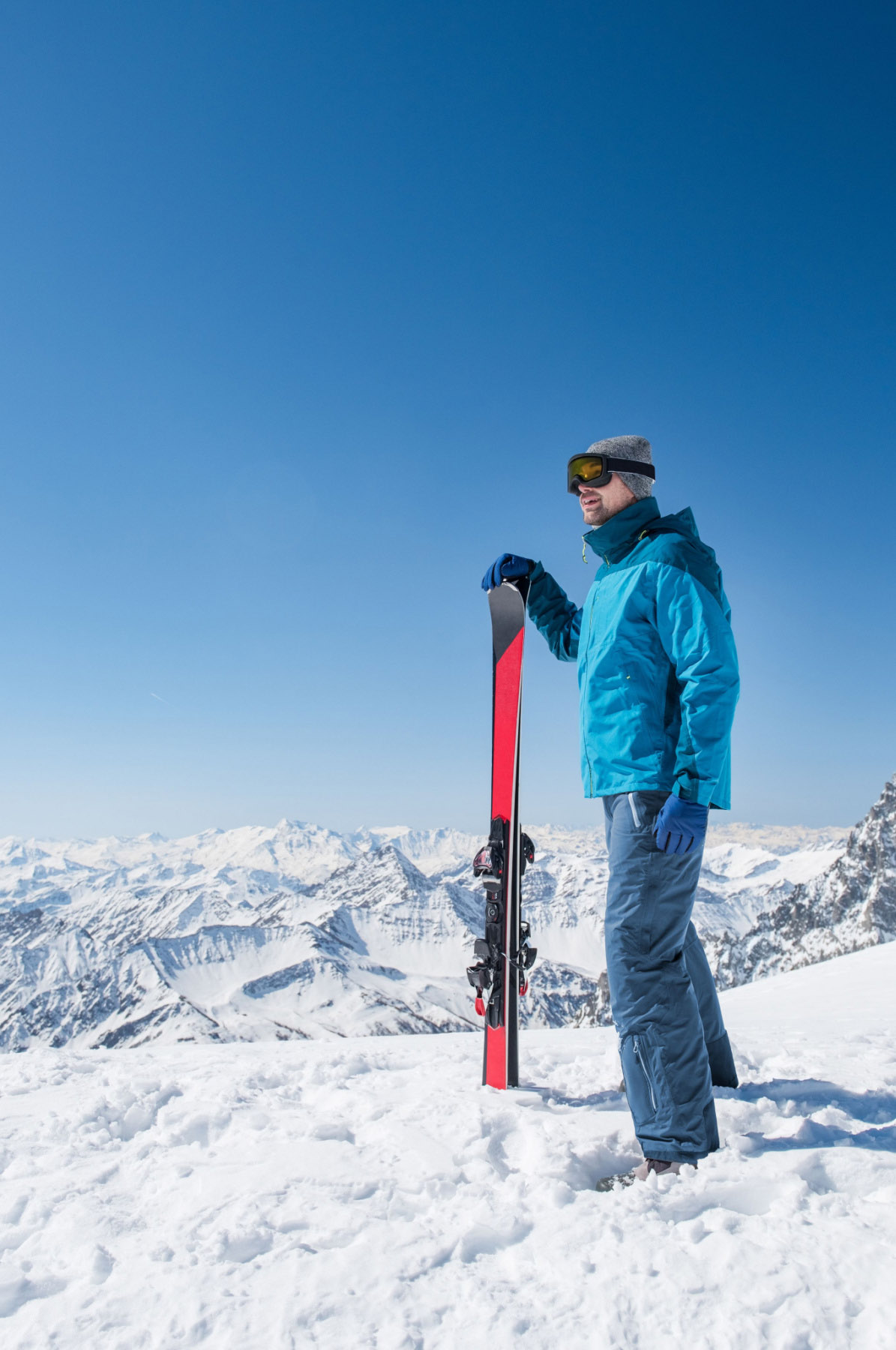
Consider your goals
You have to think of whether you want to use your ski touring gear only for touring itself or for standard downhill riding as well. If the former is true, then pick lighter, special touring skis – Rossignol Escaper 97.
If you intend to combine both worlds, go with skis that are accordingly designed. Such skis are light but solid – e.g.Scott Superguide. They're suitable for groomed and ungroomed terrain.
Opt for skis easy to control
It's already hard enough to steer on slopes with stiff and aggressive skis, so imagine how hard it has to be in rough terrain, which is difficult on its own. You'd better go with softer skis with a lower radius. Black Crows Ova are just such skis.
Look for standard shape of skis – camber with early rise tip
Everyone prefers a different shape of ski, and it's a question of own preference and style. However, the majority of the most popular touring skis have a standard shape—raised middle part, so-called camber with early rise, that helps you to push up in powder and “glide it”.
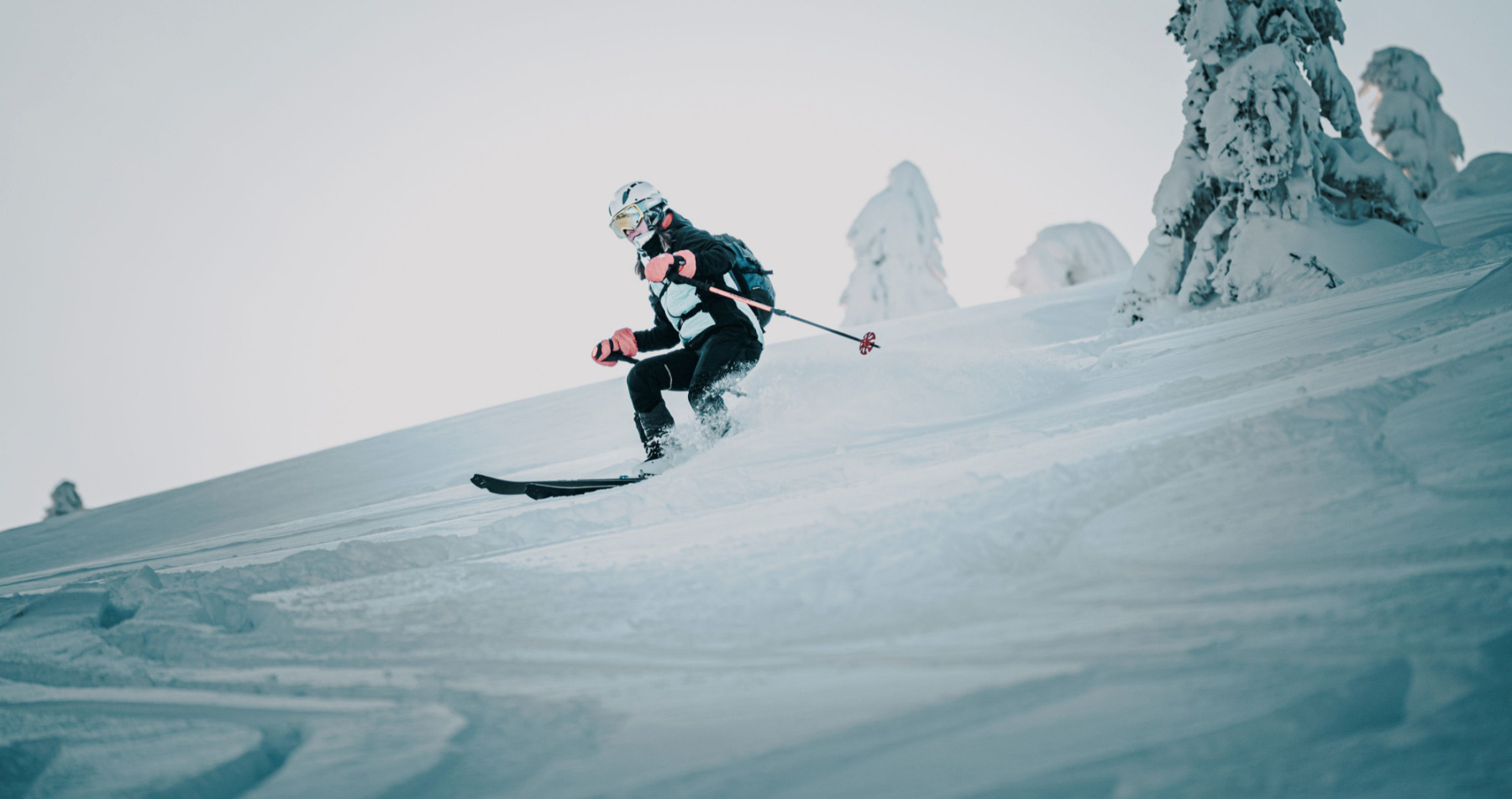
Find ski boots that fit you
The key factors of a ski boots are: to fit your feet perfectly and to keep it dry. Ski boots being compatible with the bindings is an obvious must.
For the highest comfort in ski boots, you should try them out thoroughly, wear them for at least 20 minutes and walk around to find out if your feet isn't squeezed at some point. If you're buying online, look for the manufacturer's size table and check which size you actually need. Measure length and width of your feet at home and follow this guide.
Keep an eye on bindings
It may seem like a good bargain—you invest into expensive skis and save on bindings. We don't recommend this at all. The last thing you want is to deal with stuck, frozen or broken bindings, while freezing on your way up on the mountain top.
Bindings are an inseparable part of touring skis. It's worth every penny to buy high-quality bindings that fit the skis and boots as well. For the starters, just as with skis, you don't have to go with an ultra-light option, a medium weight is enough. It's crucial that the bindings feature brakes, and for beginners, having two to three levels of heel support.
You can choose from two types of bindings – frame and pin. Frame ones are heavier, robust and it's falling out of favour. This type is great for extreme conditions and skiers who perform jumps and stunts, which puts a lot of pressure on bindings. Nowadays, most of the common ski tourers opt for pin bindings.
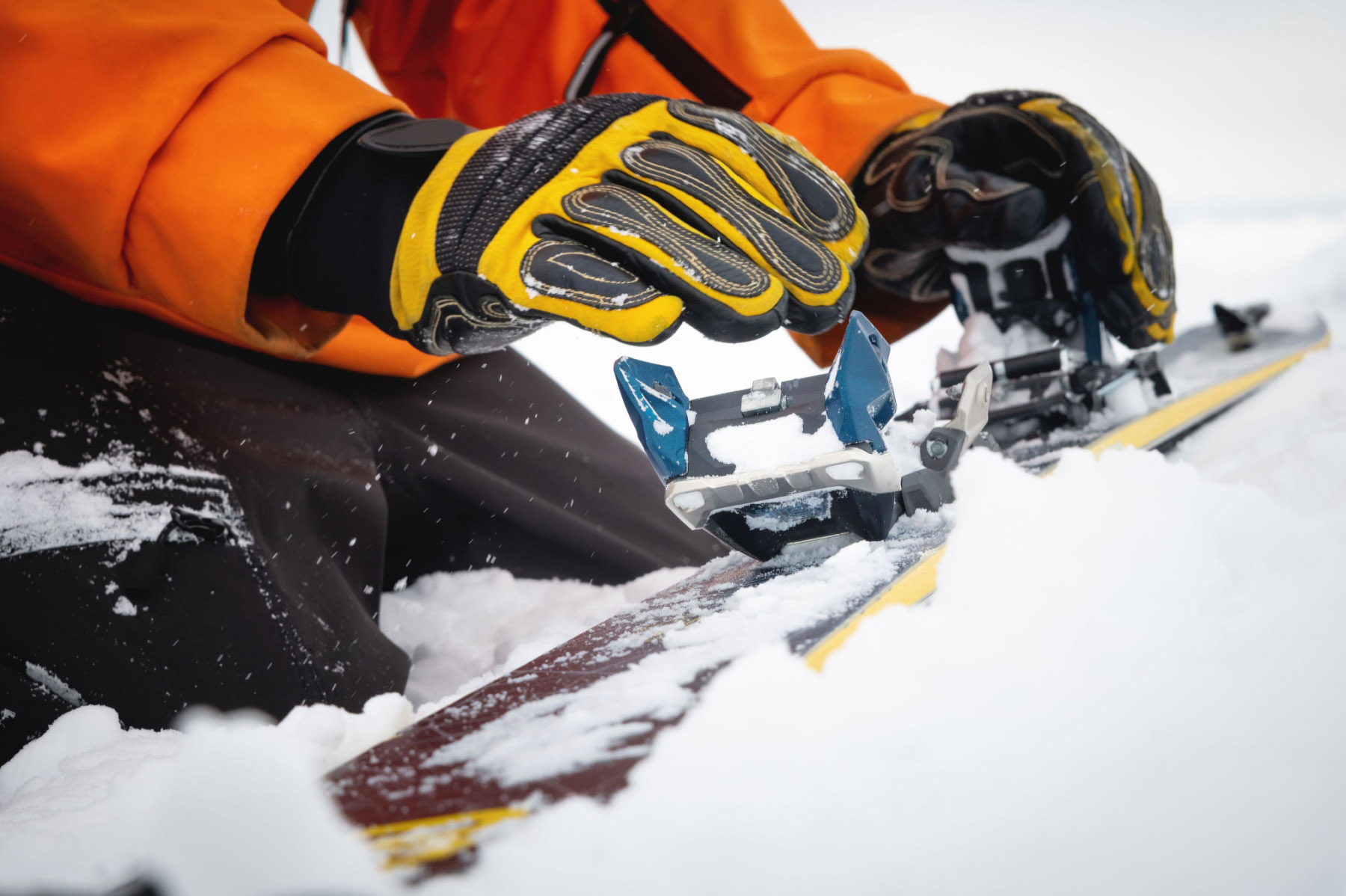
Try out most of the pieces of gear
The more you have “hiked” on skis, the better is your understanding what you really need. Therefore, try out different gear before buying your own.
What else should you get?
Touring ski poles
Although you can use standard downhill ski poles for touring, it's definitely better if you get outdoor poles, which are made for deep snow and solid surfaces. They're adjustable, so you can expand/shorten them whether you are ascending or descending.
Helmet
It's only a recommended, but a crucial piece of safety equipment if you're skiing in mountains or in rugged terrain. Choose a light and breathable helmet complying with safety standards.
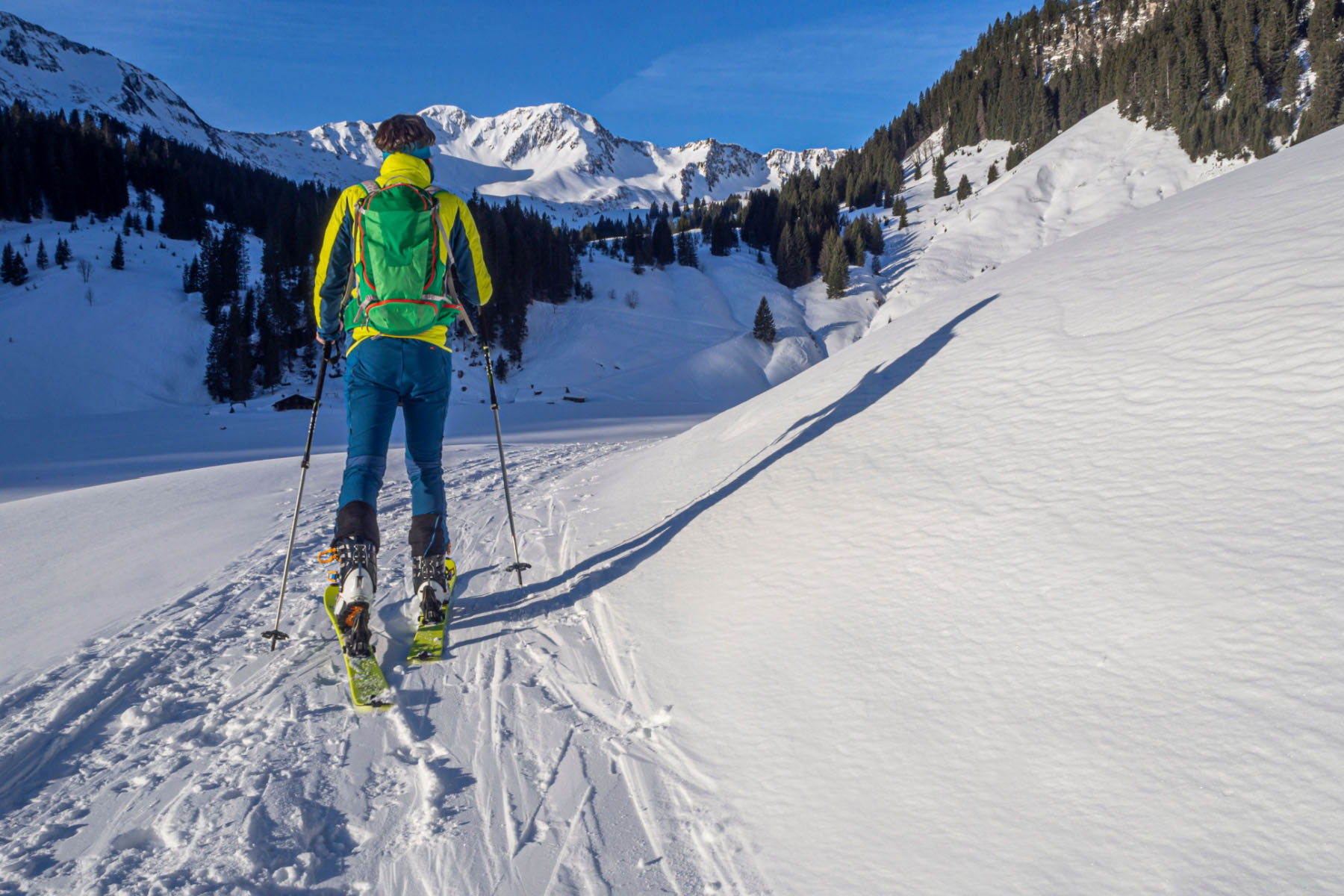
Apparel
Hiking with skis is a very specific physical activity that combines intense increase of body a temperature while ascending, and it's steep drop when skiing downhill. Thus, you have to pay extra attention to the apparel that needs to be a high performing active wear.
You need:
- a breathable basic layer that wicks the sweat;
- an easy-to-pack mid-layer;
- a top layer capable to protect you against ever-changing weather conditions;
- ski socks that keep your feet dry and free from blisters;
- a beanie, a balaclava ski mask or a neck gaiter to keep your head and neck warm.
And don't forget high-quality gloves. For ascending, the light and breathable outdoor gloves are good enough, while for the downhill ride you have to take suitable ski gloves. They can be standard five-finger ones, but mittens are gaining popularity, or you can try out the three finger gloves
Now you know what to get for your first ski touring gear.
 Musical Instruments
Musical Instruments



 Water Sports
Water Sports




 Austria
Austria
 Belgium
Belgium
 Bosnia and Herzegovina
Bosnia and Herzegovina
 Bulgaria
Bulgaria
 Croatia
Croatia
 Czech Republic
Czech Republic
 Denmark
Denmark
 Estonia
Estonia
 Finland
Finland
 France
France
 Germany
Germany
 Greece
Greece
 Hungary
Hungary
 Ireland
Ireland
 Italy
Italy
 Latvia
Latvia
 Lithuania
Lithuania
 Luxembourg
Luxembourg
 Netherlands
Netherlands
 Poland
Poland
 Portugal
Portugal
 Romania
Romania
 Serbia
Serbia
 Slovakia
Slovakia
 Slovenia
Slovenia
 Spain
Spain
 Sweden
Sweden
 Switzerland
Switzerland
 Turkey
Turkey
 Ukraine
Ukraine
 United Kingdom
United Kingdom
